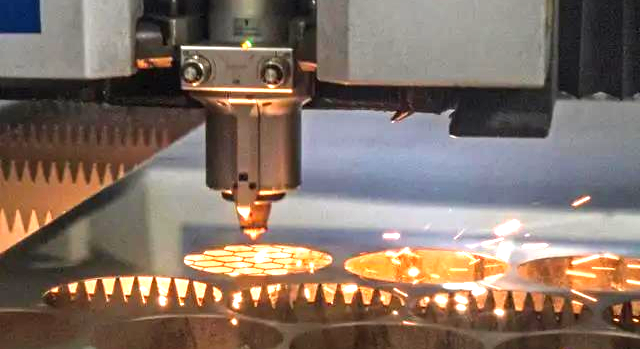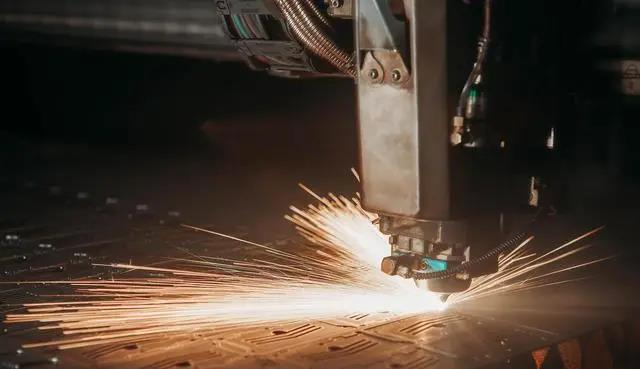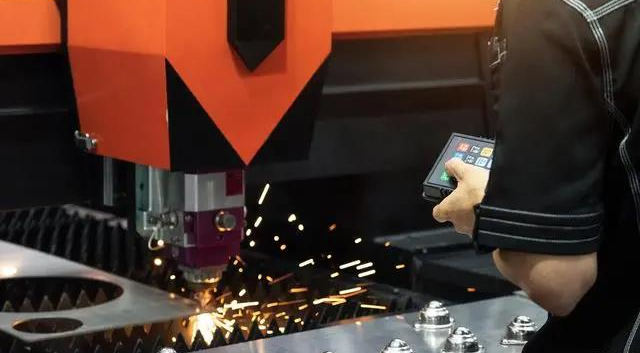5 Reasons to Use Precision Laser Cutting in the Electric Motor Industry
Laser cutting is a non-contact, thermally based manufacturing process combining focused heat and thermal energy to apply pressure to melt and spray material in a narrow path or kerf. Laser cutting has many advantages over traditional cutting methods. The highly focused energy provided by the laser and the CNC control allows precise cutting of materials from a wide range of different thicknesses and complex shapes. Laser cutting allows for high precision and small tolerance manufacturing, reducing material waste and processing material diversity.
Used in a wide variety of manufacturing applications, the precision laser cutting process has become a valuable asset to the automotive industry, producing complex, thick parts in a wide range of materials, from hydroformed 3D shapes to protective airbags. The precision electronics industry uses it to finish metal or plastic parts, housings, and circuit boards. From fabrication workshops and small shops to large industrial facilities, they offer numerous advantages to manufacturers, which are five reasons why precision laser cutting is used.

Superior Accuracy
The precision and edge quality of materials cut with lasers is superior to products cut in traditional ways. Laser cutting uses a highly focused beam of light that acts as a heat-affected zone during the cutting process and does not cause extensive thermal damage to adjacent surfaces. In addition, the cutting process utilizes a high-pressure gas (usually CO2) to blast molten material, removing material slits from narrower workpieces for cleaner processing and smoother edges on complex shapes and designs. Laser cutting machines have computer numerical control (CNC) capabilities, which allow the laser cutting process to be automatically controlled by a pre-designed machine program.CNC-controlled laser cutting machines reduce the risk of operator error, and produce parts with greater precision, accuracy and tighter tolerances.
Improved Workplace Protection
Workplace accidents involving employees and equipment negatively impact a company's productivity and operating costs. Material processing and handling operations, including cutting, are accident-prone areas. Using lasers to cut for these applications reduces the risk of accidents. Because it is a non-contact process, this means that the machine tool does not physically touch the material. In addition, beam generation does not require any operator intervention during the laser cutting process, keeping the high-power beam guarded inside the sealed machine. Typically, laser cutting requires no human intervention except for inspection and maintenance operations. Compared to traditional cutting methods, this process greatly reduces direct contact with the surface of the workpiece, which in turn reduces the likelihood of employee accidents and injuries.

Greater Material Versatility
In addition to the ability to cut complex geometries with greater precision, laser cutting allows manufacturers to make cuts that require no mechanical alterations, allowing for the use of a wider variety of materials and a wider range of thicknesses. Using the same beam at different output levels, intensities and durations, laser cutting can cut a wide variety of metals, similar adjustments to the machine can accurately cut a wide range of material thicknesses, and integrated CNC components can be automated to provide more intuitive operation.
Faster Lead Times
The time it takes to set up and operate manufacturing equipment can add to the overall production cost of each piece, and using laser cutting methods can reduce the total lead time, and the total cost of production. With laser cutting, there is no need for mold changes and setups between materials or material thicknesses. Setup time for laser cutting is greatly reduced compared to conventional cutting methods, which involve more machine programming than loading material. In addition, the same cut can be completed with a laser up to 30 times faster than with conventional sawing.

Lower Material Costs
By using laser cutting methods, manufacturers can greatly reduce material waste. The beam used in focused laser cutting produces a narrower kerf, which reduces the size of the heat-affected zone and reduces the amount of heat-damaged, unusable material. When flexible materials are used, the deformation caused by mechanical machine tools also increases the amount of unusable material. The non-contact nature of laser cutting eliminates this problem, and the laser cutting process is able to cut with greater precision, tighter tolerances, and less material damage in the heat affected zone. Allowing the part design to be placed more closely to the material, the tighter design reduces material waste and lowers material costs over time.

Conclusion
The semiconductor industry is using laser cutting in the electronics industry, adding cuttable silicon, gemstones, and complex parts for the production of composite materials. Laser cutting has a wide range of uses in the medical industry, including medical production equipment and devices, cutting precision tubing, and surgical applications that require sterile and precise cutting. The smaller heat-affected zone produced reduces the amount of material wasted, thus lowering overall costs, and the non-contact nature of the process reduces the risk of injuries and accidents in the workplace. Faster programming and changeover times for the laser cutting process allow for greater production versatility while significantly reducing lead times.










